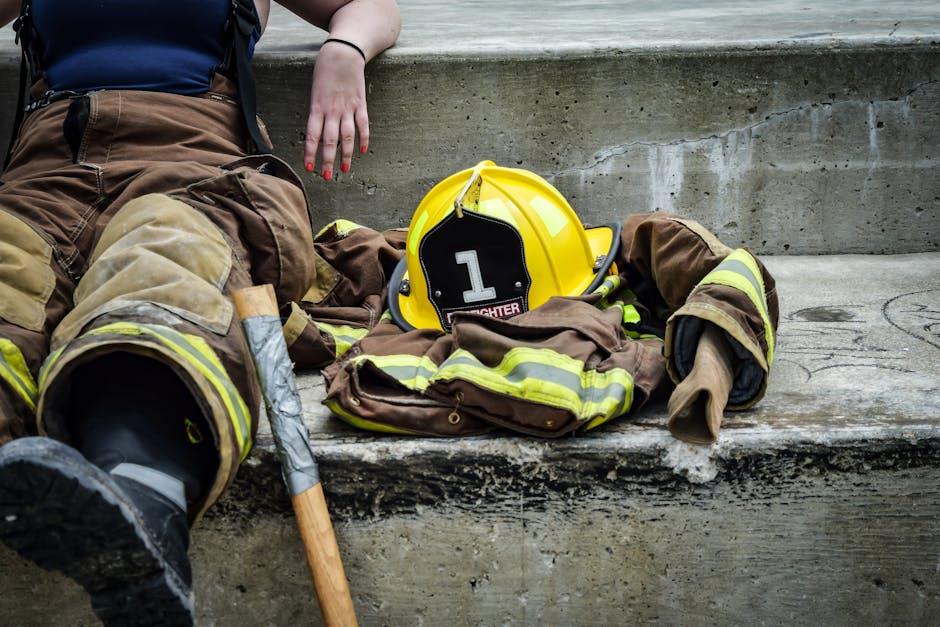Importance of advanced helmet lights in firefighting
Firefighting at night comes with its own unique set of challenges. Having advanced helmet lights is crucial for ensuring firefighters can navigate in low-light conditions effectively. These lights illuminate the surrounding area, making it easier to locate exits, equipment, and fellow team members. With advanced helmet lights, firefighters can work more efficiently and safely, reducing the risk of accidents and improving overall operational effectiveness.
Challenges faced during nighttime firefighting operations
Firefighters face various challenges during nighttime operations. Limited visibility due to darkness makes it difficult to navigate and assess the situation effectively. Identifying hazards, locating victims, and coordinating tasks become more challenging in low-light conditions. Firefighters also need to contend with smoke and potential structural damage in buildings, adding to the complexity of their tasks. Effective communication among team members is crucial to ensure everyone’s safety and efficient firefighting operations.
Evolution of helmet lights for firefighters
Recent advancements in technology have transformed the humble firefighter helmet light into a sophisticated tool tailored for nighttime operations. Manufacturers are integrating powerful LED lights into helmets to enhance visibility in dark and hazardous environments. These modern helmet lights are lightweight, durable, and provide firefighters with hands-free illumination, allowing them to focus on their tasks efficiently and safely. The evolution of helmet lights has significantly improved the effectiveness of nighttime firefighting operations, enabling firefighters to navigate through challenging conditions with greater ease and effectiveness.
Key features of advanced helmet lights
Advanced helmet lights for nighttime firefighting operations typically come equipped with durable materials that can withstand harsh conditions. These lights often have multiple lighting modes to provide flexibility in different situations. Additionally, they are designed to be lightweight for comfortable wear during extended periods. Some models may also include adjustable straps to ensure a secure fit on the helmet. These key features aim to enhance visibility and safety for firefighters working in low-light environments.
Enhancing visibility and safety with helmet lights
Helmet lights are crucial for improving visibility and ensuring safety during nighttime firefighting operations. According to NFPA 1971 guidelines, helmet lights are essential for firefighters to navigate dark and hazardous environments. These lights illuminate the surroundings, making it easier for firefighters to spot potential dangers and coordinate their efforts effectively. By enhancing visibility and safety with helmet lights, firefighters can perform their duties more efficiently and reduce the risk of accidents in challenging conditions.
Benefits of using advanced helmet lights
Using advanced helmet lights during nighttime firefighting operations can greatly enhance visibility and safety for firefighters. These lights provide bright illumination in dark and smoky environments, making it easier to navigate and locate individuals or objects. Hands-free operation allows firefighters to focus on their tasks without the hassle of holding a flashlight. Additionally, advanced helmet lights often come with multiple lighting modes such as spot, flood, and strobe, providing versatile lighting options for different situations. The durability of these lights ensures they can withstand the rigors of firefighting operations, offering reliable performance when it’s needed the most.
Types of helmet lights available for firefighters
Helmet lights for firefighters come in various types to enhance nighttime firefighting operations. Some common types include LED lights, halogen lights, and incandescent lights. LED lights are popular for their energy efficiency and bright illumination, while halogen lights are known for their intense brightness. Incandescent lights, although less common nowadays, provide a warm, traditional glow. The choice of helmet light type depends on factors like brightness needed, energy efficiency, and personal preference.
How to choose the right helmet light for firefighting
Firefighters need helmet lights that are durable and provide sufficient brightness for nighttime operations. When choosing a helmet light for firefighting, consider the following:
- Look for lights specifically designed for firefighting to ensure they meet safety standards.
- Check for lights with adjustable brightness settings to adapt to different environments.
- Ensure the light is lightweight and comfortable to wear for extended periods.
- Opt for a helmet light with a long battery life to prevent frequent recharging during operations.
- Choose a waterproof and impact-resistant light to withstand harsh conditions.
Training considerations for using advanced helmet lights
When using advanced helmet lights for nighttime firefighting, it’s crucial to undergo proper training to maximize their benefits. Here are some key considerations to keep in mind:
- Familiarize yourself with the operation and functionality of the advanced helmet lights.
- Practice using the lights in various simulated firefighting scenarios to improve proficiency.
- Understand the different light modes and settings available on the helmet lights.
- Learn how to properly mount and adjust the lights on your helmet for optimal visibility.
- Ensure that all team members are trained on how to effectively communicate using the lights during operations.
Future advancements in helmet light technology
Manufacturers are constantly researching and developing new technologies for helmet lights to enhance nighttime firefighting operations. These advancements aim to improve visibility, increase safety, and provide better illumination in challenging environments. LED lights, thermal imaging, and integrated cameras are some of the features that may be integrated into future helmet lights, offering firefighters enhanced capabilities to navigate through smoke-filled areas and locate individuals in distress. These advancements in helmet light technology are crucial in ensuring the effectiveness and safety of firefighters during nighttime operations.


